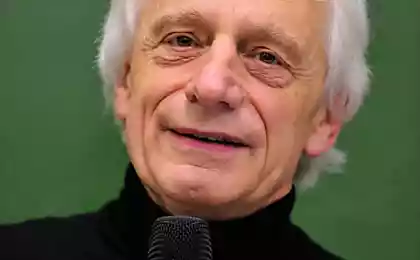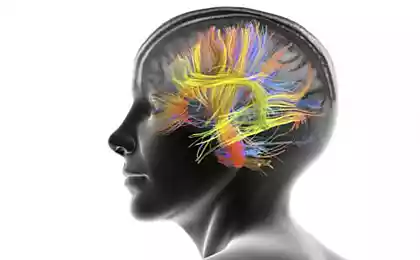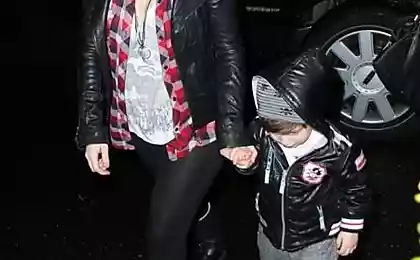510
Power neverlike: as the children catch our social stereotypes
Professor of psychology Kristina Olson explains how non-verbal messages adults, even unconscious, influence the worldview of the children and form their model of behavior and social and stereotypes.
Not so long ago during the election campaign, Donald trump has been criticized for the incident when he mocked the journalist with physical disabilities Serge Kowalewski, and Pulitzer prize winner. Mr trump insisted that he does not mimic Mr. Kowalewski that, on the contrary, called it "a good reporter", although non-verbal signals of the presidential candidate spoke about something else. These signals are passed on to listeners a powerful message.

A recent study examined how much of the behavior and manifestation of adults affect the preconceptions of children. The findings of scientists cause for concern because they suggest that children can "catch" the bias they see in adults, even if it appears much thinner than in the case with trump.
Recently in Psychological Science published an article describing the results of an experiment in which four - and five-year-olds watched adult behavior. In experiments with adults showed towards one person negative non-verbal signals, frowning and using an unfriendly tone, while against another showed positive non-verbal signals. Some time later, the children began to Express exactly the same predisposition in favor of persons who received positive nonverbal cues.
This study shows that children are sensitive to the messages adults on who they like or don't like, one of others they perceive as "good" or "bad". In other words, children can "catch" the prejudices of adults, even if they are not imposed explicitly. This suggests that the latent tendencies adults can affect the social prejudices of children, interacting with them. Children do not just pay attention to the things we say, they also pay attention to how we Express our preferences.
Of course, there are many situations in which this strategy may be useful for adaptation. For example, if the mother frowns at his neighbor, then it can be valid reasons, perhaps he is a man whom children should be avoided.
But our results suggest that in children these tendencies manifest even more. For example, research has shown that children not only develops a prejudice against the person in respect of whom they saw negative non-verbal assessment. Their inclinations and prejudices can also spread to other individual who got in his side, a negative non-verbal signals. The fact that prejudice is spread and on the other, suggests that this process can lay the Foundation for the development of significant inter-group stereotypes and prejudices.
But beyond the research laboratory kids can get mixed signals — as well as in a situation when trump mocked Kowalewski, calling at the same time its kind of small. And what is important in this case — words or actions?
Researchers Luigi Castelli, Cristina de Dia and drew Nadal decided to check it out. They showed white children of the white actor, showing a negative non-verbal signals towards the black actor, while in words he was doing a friendly or neutral statements. Subsequently, the researchers found that the children seemed to ignore the verbal message to the actor: children perceived negative nonverbal signals in the direction of an African-American, although a white actor was talking about the colored positively or neutrally. Even more disturbing is the fact that in subsequent studies, the children not only demonstrated a bias against the familiar black man, but against the new African American, whom they have not seen before.
What does it all mean? Children look to the adults in their world, not only in order to learn the right things, but also to understand whom to sympathize and whom to approach or whom to avoid and whom to distance themselves. When children see adults in my life or on TV non-verbal demonstrate your grades, they absorb this information and simultaneously learn to think that some people are better than others.

Anyway, this new study shows that we can unwittingly convey their own passions to our children via nonverbal behavior. This means that ultimately, we adults should be more conscious in demonstrating to our preferences and assessments because they can be a model for our children. Considering how easily kids capture social preferences and prejudices of the adults around them, we should start to think about the messages we send to children as vowels, not the vowels.published
P. S. And remember, only by changing their consumption — together we change the world! ©
Source: monocler.ru/deti-sotsialnyie-stereotipyi/
Not so long ago during the election campaign, Donald trump has been criticized for the incident when he mocked the journalist with physical disabilities Serge Kowalewski, and Pulitzer prize winner. Mr trump insisted that he does not mimic Mr. Kowalewski that, on the contrary, called it "a good reporter", although non-verbal signals of the presidential candidate spoke about something else. These signals are passed on to listeners a powerful message.

A recent study examined how much of the behavior and manifestation of adults affect the preconceptions of children. The findings of scientists cause for concern because they suggest that children can "catch" the bias they see in adults, even if it appears much thinner than in the case with trump.
Recently in Psychological Science published an article describing the results of an experiment in which four - and five-year-olds watched adult behavior. In experiments with adults showed towards one person negative non-verbal signals, frowning and using an unfriendly tone, while against another showed positive non-verbal signals. Some time later, the children began to Express exactly the same predisposition in favor of persons who received positive nonverbal cues.
This study shows that children are sensitive to the messages adults on who they like or don't like, one of others they perceive as "good" or "bad". In other words, children can "catch" the prejudices of adults, even if they are not imposed explicitly. This suggests that the latent tendencies adults can affect the social prejudices of children, interacting with them. Children do not just pay attention to the things we say, they also pay attention to how we Express our preferences.
Of course, there are many situations in which this strategy may be useful for adaptation. For example, if the mother frowns at his neighbor, then it can be valid reasons, perhaps he is a man whom children should be avoided.
But our results suggest that in children these tendencies manifest even more. For example, research has shown that children not only develops a prejudice against the person in respect of whom they saw negative non-verbal assessment. Their inclinations and prejudices can also spread to other individual who got in his side, a negative non-verbal signals. The fact that prejudice is spread and on the other, suggests that this process can lay the Foundation for the development of significant inter-group stereotypes and prejudices.
But beyond the research laboratory kids can get mixed signals — as well as in a situation when trump mocked Kowalewski, calling at the same time its kind of small. And what is important in this case — words or actions?
Researchers Luigi Castelli, Cristina de Dia and drew Nadal decided to check it out. They showed white children of the white actor, showing a negative non-verbal signals towards the black actor, while in words he was doing a friendly or neutral statements. Subsequently, the researchers found that the children seemed to ignore the verbal message to the actor: children perceived negative nonverbal signals in the direction of an African-American, although a white actor was talking about the colored positively or neutrally. Even more disturbing is the fact that in subsequent studies, the children not only demonstrated a bias against the familiar black man, but against the new African American, whom they have not seen before.
What does it all mean? Children look to the adults in their world, not only in order to learn the right things, but also to understand whom to sympathize and whom to approach or whom to avoid and whom to distance themselves. When children see adults in my life or on TV non-verbal demonstrate your grades, they absorb this information and simultaneously learn to think that some people are better than others.

Anyway, this new study shows that we can unwittingly convey their own passions to our children via nonverbal behavior. This means that ultimately, we adults should be more conscious in demonstrating to our preferences and assessments because they can be a model for our children. Considering how easily kids capture social preferences and prejudices of the adults around them, we should start to think about the messages we send to children as vowels, not the vowels.published
P. S. And remember, only by changing their consumption — together we change the world! ©
Source: monocler.ru/deti-sotsialnyie-stereotipyi/
Power neverlike: as the children catch our social stereotypes
As the ratings of other affect your life























